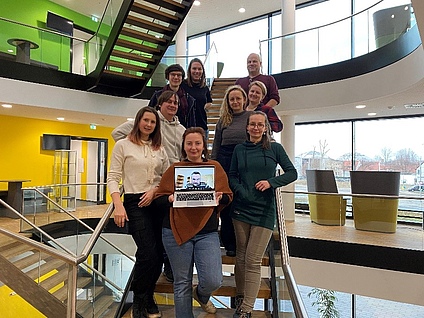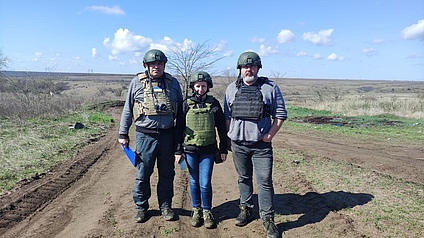Identifying drivers and mechanisms of plant diversity change across small spatial scales in Ukrainian grasslands
Grasslands rank among the Earth's most species rich habitats, and at fine spatial scales they can support even greater plant diversity than tropical forests. For example, in steppe grasslands in Ukraine we found 7 species of vascular plants per 1 cm2. Among the central questions are how so many species can coexist in such limited spaces and what governs the spatial variability of species composition among local communities. In our sDiv synthesis project sCaleGrassDiv, co-hosted by iDiv member Jon Chase, we address these questions using data collected from 382 sublots nested within 191 grassland plots located across all grassland habitat types in the Ukraine ranging from saline and dry habitats via wet and mesic grasslands up to alpine grassland types. Some of the grassland types are unique and some are global biodiversity hotspots for grassland vegetation, and thus are particularly important for biodiversity conservation. Covering all these grassland types allows us to test a wide gradients of biodiversity drivers, such as climate gradients and variability, soil properties, and land use. We test the mechanisms for each of these drivers when altering species richness on different grain sizes.
While previous research on spatial variability in plant diversity focuses mainly on vascular plants, our data encompass vascular and non-vascular plants (i.e., lichens and bryophytes), which, as has been shown earlier, respond differently to the environmental gradients. Furthermore, our species list of 1560 plant species includes multiple rare species as well as species endemic to the territory of Ukraine, for which functional traits are not available in the literature and for many of which we have our own measured traits. We will merge our own trait data with the trait data from the literature, to test the drivers of functional diversity and how they differ among scales. Ukraine in general is a strongly underrepresented area in scientific literature, while such spatially well-resolved data as ours has not been published before. Furthermore, our datasets were collected using the same standardized GrassPlot methodology of The Eurasian Dry Grassland Group (EDGG) and thus our results can be compared to the other or similar grassland habitats globally.
We are currently frequently asked how our work is affected by the war in Ukraine. We can say that the war has a significant impact on our team members and on our work. Seven members of our working group are originally from Ukraine and were affiliated with the Ukrainian scientific or academic organizations before the full-scale military invasion of Ukraine by the Russian Federation on February 24 2022. Two of our team members were forced to leave Ukraine after the outbreak of hostilities and currently hold refugee status in the Czech Republic and Switzerland. Another two members were on an internship outside of Ukraine, and due to the full-scale invasion they were unable to return to Ukraine. One of our male colleagues was unable to join the workshop in person due to the ban for men of military age to travel outside of Ukraine. Monitoring our study sites has become challenging and at times unsafe. Some of our permanent monitoring sites are currently temporarily occupied by Russian troops, rendering them inaccessible and preventing us from continuing our research. Furthermore, many vegetation experts had to depart the country as well as the funding for scientific research has been severely constrained. Considering all these circumstances, one can truly appreciate the significance of the sDiv support. It enables our team to meet, to brainstorm and to synthesize our data by bringing together the diversity of expertise. The results from the 1st workshop are in preparation for a publication. Moreover, for certain team members it facilitated research collaboration extending far beyond the scope of the project itself.
Oksana Buzhdygan, Anna Kuzemko


